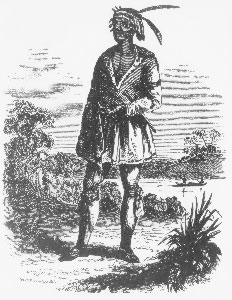
Week of Dec. 25-31
December 25
1760—The first poem written by a Black person and published in America is published on Christmas day 1760. It was written by Jupiter Hammon—a slave in Long Island, N.Y., who was allowed to attend school. The poem was entitled “An Evening Thought: Salvation by Christ with Penitential Cries.” Hammon also wrote a poem to Phyllis Wheatley—another early and great African-American poet. Hammon is thought to have lived until he was 95 (1711-1806). He was devoutly religious.

1838—At the Battle of Okeechobee on Christmas Day 1838, a force of Seminole Indians soundly defeated U.S. government troops who were trying to force them off their lands. The Seminoles were led by a Black chief named John Horse. The Seminoles were perhaps the most racially integrated of all the Indian tribes. During the early 1800s, Blacks escaping slavery in Florida and Georgia were frequently granted safe haven by the Seminoles. Significant intermarriage resulted. Their aid for escaped slaves was one of the reasons the government wanted so desperately to relocate the Seminoles from Florida to the Midwest. But the Seminoles put up a more fierce resistance than any of the other Indian tribes. However in 1849, the government declared that the Black Seminoles were still slaves. Finally, in 1850, faced with overwhelming military force, large numbers of Seminoles, under the leadership of Horse and a full blooded Seminole known as Wild Cat, left the U.S. for Mexico.
1951—Mr. and Mrs. Harry T. Moore are murdered when a bomb explodes under their home in Mims, Fla. Both were teachers and courageous civil rights activists. It is believed the bomb was planted by a White terrorist organization such as the Ku Klux Klan.